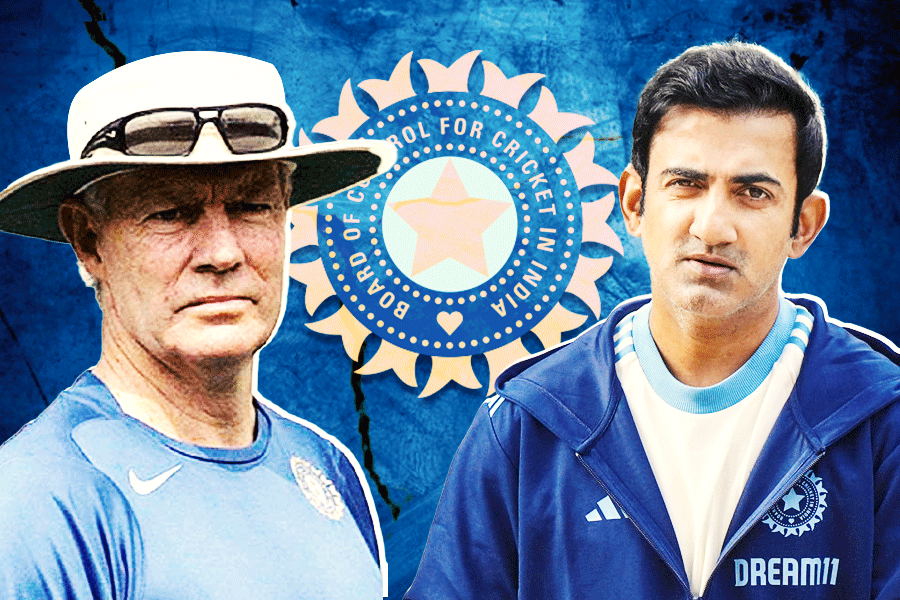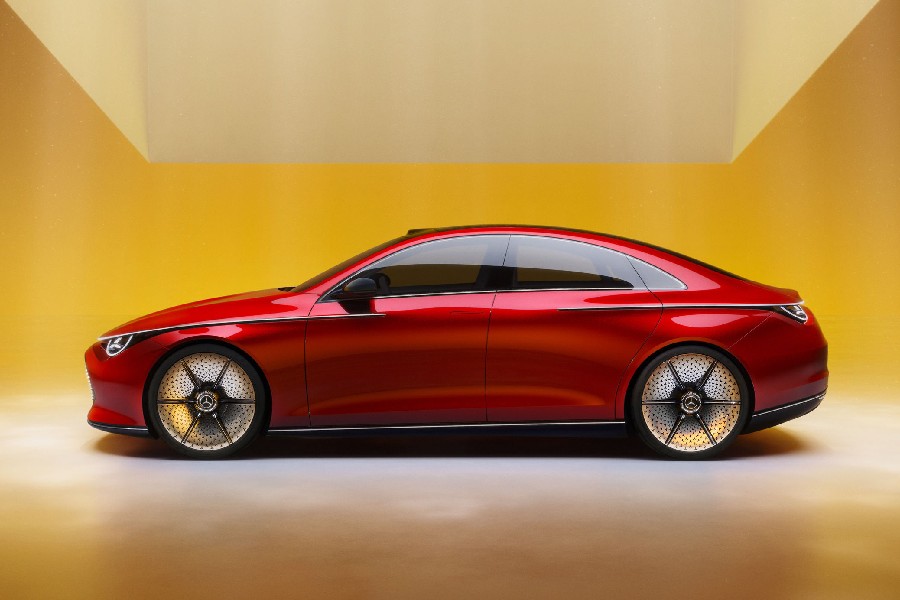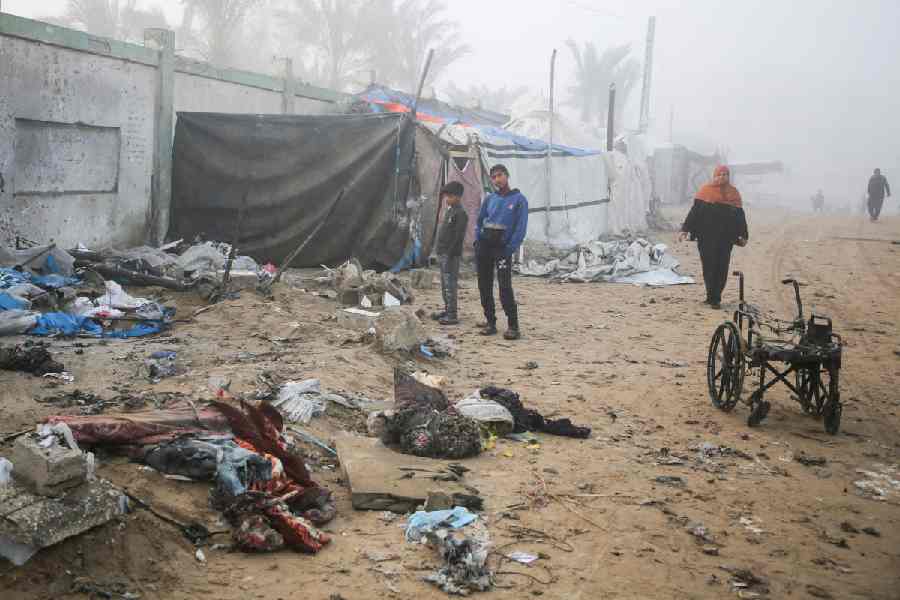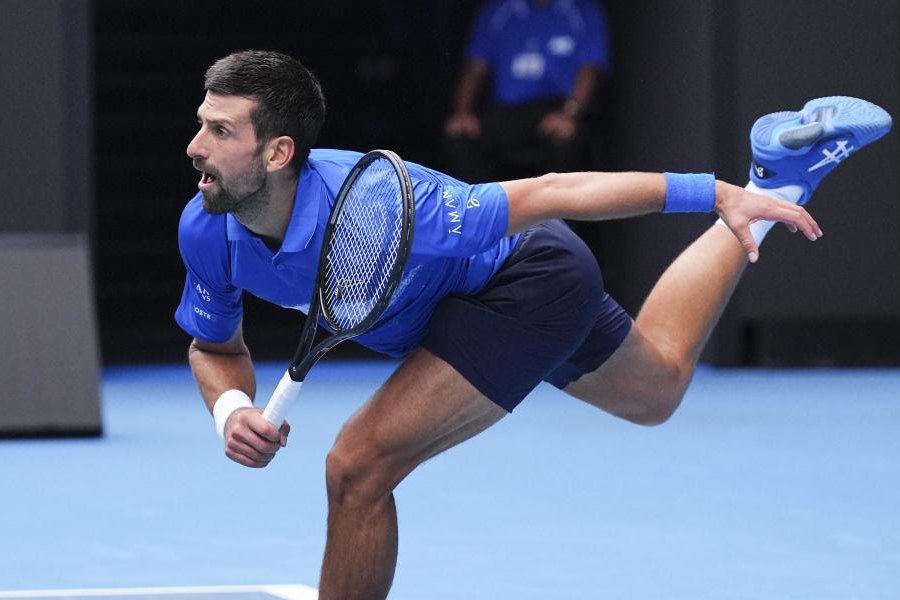Delhi-based designer Nakul Sen has brought his label to Calcutta — at Galleria 1910. Born and brought up in old Delhi, Nakul has an inherent connect to the vintage, which finds a spontaneous expression in his designs. Having no formal training in fashion designing, he started off with costume designing for theatre and dance right after school. He moved to New York to work with various Broadway productions. He wanted to try fashion, resulting in the birth of his eponymous label.
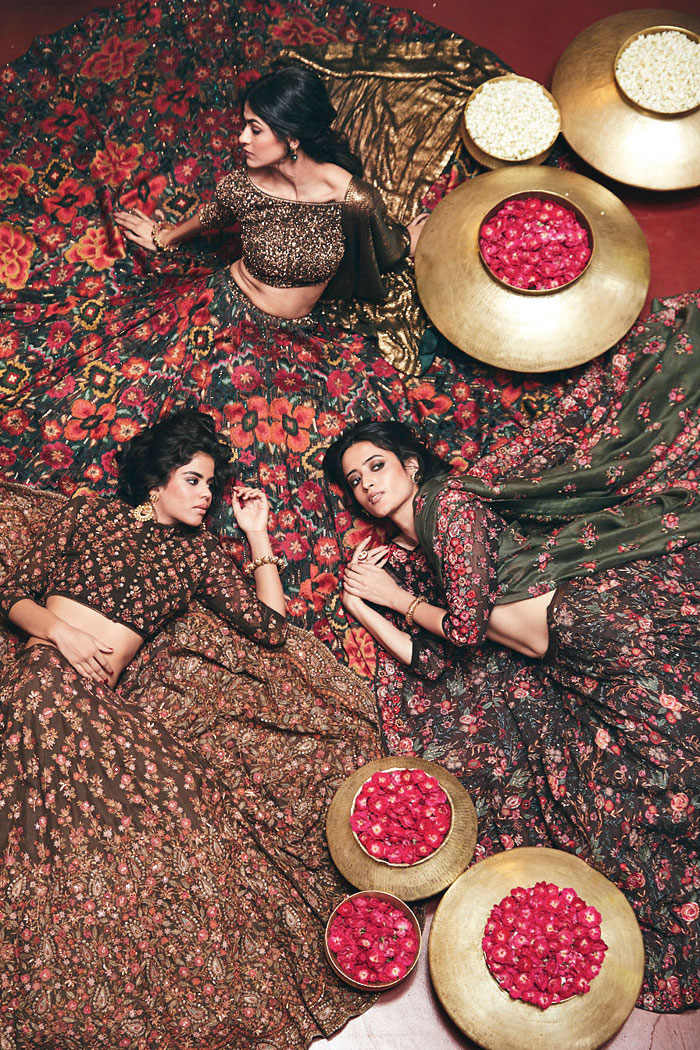
"If you are talking about aesthetics, specially in Calcutta, it is the city of Rabindranath Tagore and Satyajit Ray. So there is a lot of culture here and it is probably one of the most cultured parts of India," says Nakul Rajkumar Mondal
On coming back to India, the designer started doing costumes for Bollywood films. “It’s been quite long. I was doing costume designing when fashion happened and because of my exposure, I started out with fashion in the American market. Looking back, I think it’s been a good journey,” Nakul told The Telegraph when we met him at his 2,000sq ft atelier that showcases a wide range of ethnicwear for ladies.
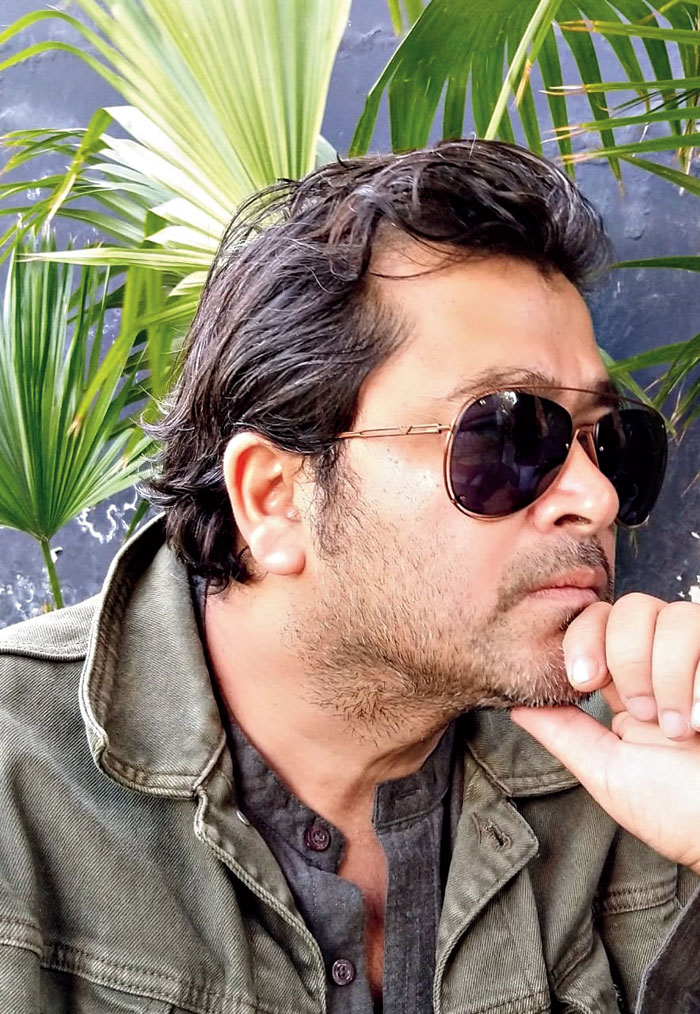
"No, I am not a Bengali.... Sen is basically like a Tansen or a Bhimsen... like that. It is a middle name," says Nakul Sen Sourced by The Telegraph
You are a Sen. So, do you have a Bengali connect?
(Laughs) That is probably the first question I am asked. No, I am not a Bengali.... Sen is basically like a Tansen or a Bhimsen... like that. It is a middle name. I will not be able to pronounce rosogolla the same way as you do.

Chequered floor at the entrance and wooden flooring for the rest of the store. A play of dim chandelier lighting and bright lights at the corners. Fresh flowers and hues of green and brown. The old-world charm of the brand complements the heritage vibe of Galleria 1910. Rajkumar Mondal
What do you like about the Calcutta aesthetics?
If you are talking about aesthetics, specially in Calcutta, it is the city of Rabindranath Tagore and Satyajit Ray. So there is a lot of culture here and it is probably one of the most cultured parts of India. There’s a huge heritage behind it, whether we look at music or architecture, poetry or painting. Especially if we look at Galleria, this beautifully restored building of 1900s, by Aditya Poddar... that is actually what excited me... linking my thoughts and views with the whole architectural beauty of a place. So that’s when I decided that the store has to be here. The whole building is so beautiful that you cannot not have a place here. We are always happy selling to the people of Calcutta or Dhaka through our Delhi store or through other stores where we were earlier, like Elahe.
Tell us about the look of the store...
It’s a heritage building, so we, too, thought that the interiors of the store must be that way. The huge wooden panels on the wall, the colours of the entire building and beautiful paintings, all add to the aesthetics of the store. So walking into the store is like walking into a different era. There is a huge vintage vibe in the entire building and also if you look at my collection you will see that we work a lot with this old-world charm, especially through our embroideries. But of course we add a bling element to it just like in the entire vintage setting you will have a nice bright golden frame to lift up the entire place.
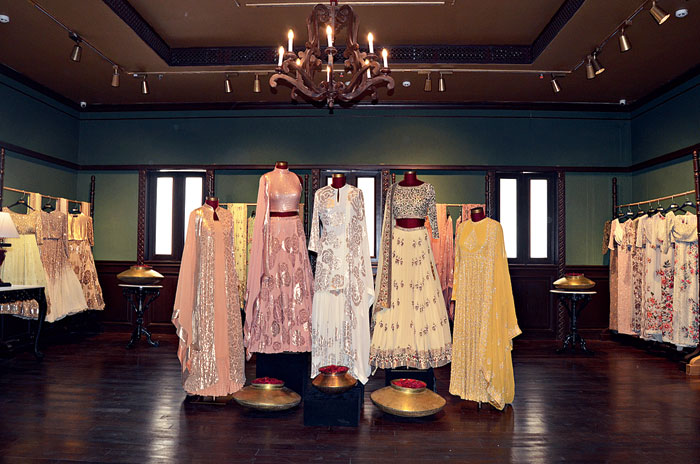
The display is divided into two broad categories of light and heavily embroidered ensembles. From traditional saris and lehngas to shararas and kurtas, the collection caters to all kinds of formal occasions. For a touch of the contemporary, there is a range of cockatil saris and capes too. Rajkumar Mondal
What have you launched with?
I would say that the kind of clothes we do, our collection is not very season based because it is all about eveningwear. We don’t specialise in bridals as such but we actually design for the entire family of the bride... maybe not for the main function but for all the wedding functions, since that is the focus of the brand.
What is your design philosophy?
The brand was earlier only operating abroad. Only 10 years ago we came to India. So for 17-18 years we were selling out of 200-odd boutiques worldwide and, of course, that was more of sequins, but coming back to India, when we started operations here, we started working with sequins, our trademark. And, we started imbibing a lot from Kashmiri embroidery. They are completely two different kinds of work — the Kashmiri more colourful but subtle and on the other hand sequins and cutdana with all the glitz and glam. So if you see the collection, you will see all sorts of sequins. So sequins, resham and Kashmiri work have been our inspiration for a very long time.
What we do is we stick to the basic structure of a design in terms of a garment. Like I don’t like to distort saris. I am not saying people who make a different version are not good, they are all beautiful, but, having said that, there is a whole old-world charm to it. I would rather stick to the old and the standard cut of a lehnga or a sari or even a kurta.
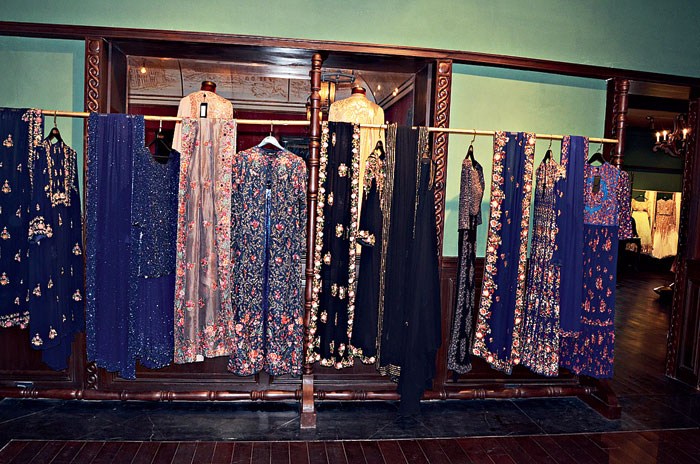
The display of the ensembles is also categorised into various shades, depending on the colour mood of the week or the month. Rajkumar Mondal
Your collection is mostly occasion wear yet with a hint of minimalism. How do you strike that balance?
It is difficult to answer how we strike the balance but the entire team, me and all my designers, we try and make the garment that way so that you can wear it for a basic dinner as well. It’s not only an occasionwear for a special occasion but you can also wear it for a party, office party or even a family function. So our basic aim is to cater to the trousseau of the bride and her family. And some garments are done with heavy embroidery.
Your clothes are easy-breezy too.
The basic fabric that we use is chiffon. I find chiffon to be sensuous and feminine. So the idea is to not provide something structured... it should just fall... even if it is heavy.
Who are your favourite designers among your contemporaries?
I believe everyone is doing beautiful work. Everyone has a customer. Everyone has appreciation coming from some part or the other. I have been in the business for so long, like for example designer JJ Valaya and I, we both started at the same time. When we started there was this designer called Rohit Khosla. They are all good. So when we started designing there was only a Rohit Bal and a Rohit Khosla... two-three other designers who I don’t think are working any more. But the industry is evolving and becoming so much better. It is becoming more international, people are accepting our designs. Still it is not a very old industry; it is a 30-35-year-old industry.
Your message for the Calcutta fashionista?
I think they dress up very beautifully. And whenever someone wears more of traditional clothes, personally I find them more beautiful or sensual and classic.




